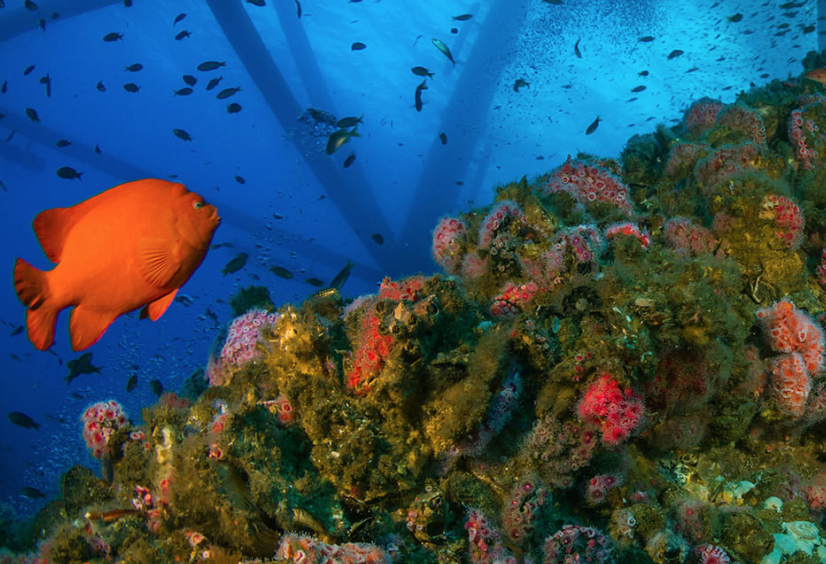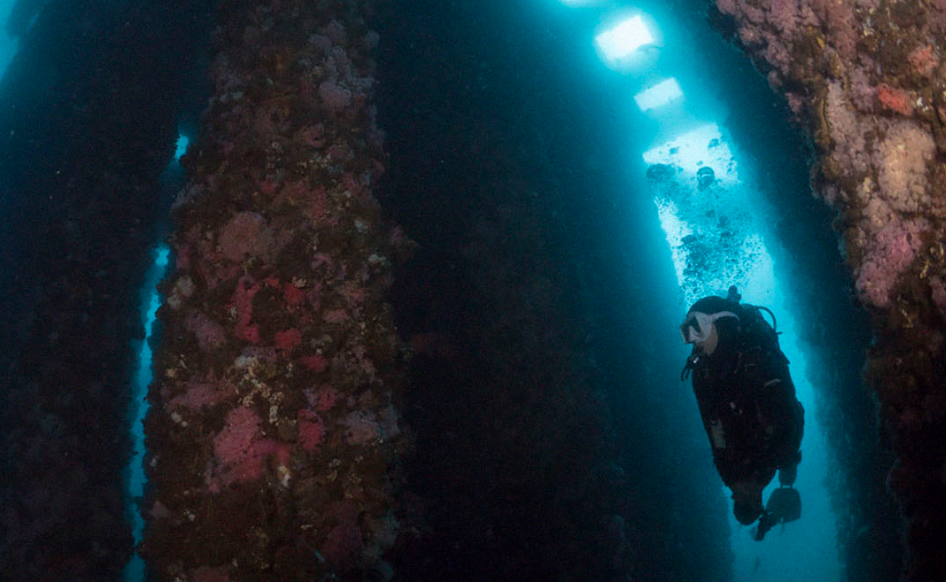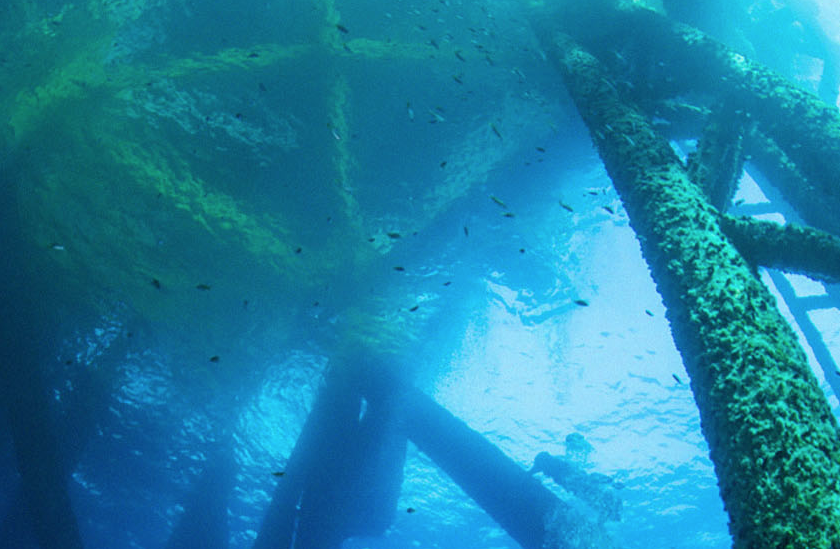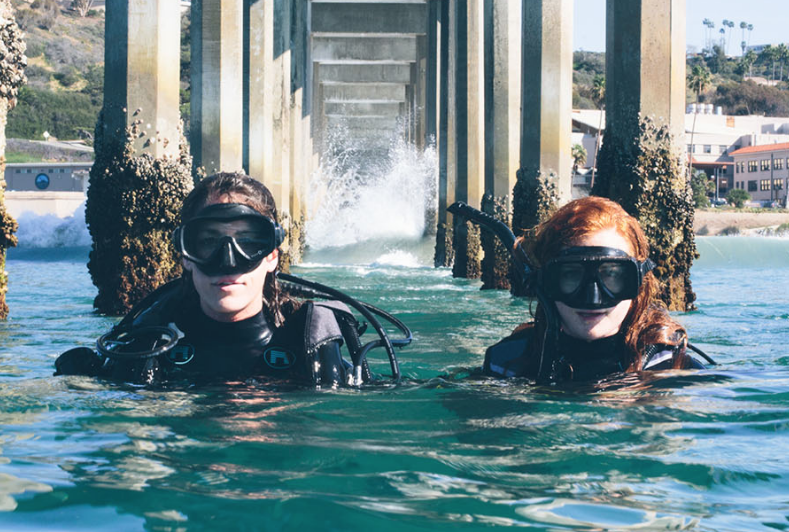
Amber Jackson and Emily Callahan work on an awesome project. The project is called Rigs to Reefs and their work involves studying the ecosystems around off-shore oil platforms and advocating for their owners to leave the platforms in the water when they reach the ends of their useful, oil-pumping economic lives. You would be forgiven for thinking this was a terrible idea, except that the structures have a second life as thriving manmade reefs for the unique fish and coral ecosystems that have developed underneath them, as well as passing sea lions and dolphins.
Artificial reefs aren’t a new idea: fishermen have used structures to attract fish for 100s of years. The practice of making them from decommissioned rigs, of which the first 85 feet are sometimes toppled and laid on their sides, towed or removed, was first trialed in the Gulf of Mexico in the late 1980s. There are now 400 to 500 in the Gulf alone, several in Malaysia and the practice is becoming more common.

Leaving rigs in the water instead of removing them makes economic sense for the oil companies, but the success of the project is as much to do with persuading everybody to love the ocean and its wildlife, as it is about money. Recently, Amber and Emily, an oceanographer and environmental scientist, and a marine conservation biologist and oil and gas consultant respectively, have been using Remote Operated Vehicles and video to explore what there might be to fall in love with 8000 feet down near the ocean floor (answer: way more than you would think).
In California, the whole project couldn’t be more relevant today, or more urgent. The Administration are pushing for more drilling off the coast, not less, but platforms built in the 1950s are getting old. Even if drilling can be held off, lots of people would argue that a starting point for progress is to reconcile ourselves with what we’ve already done to our oceans, as well as protecting them from what we may do in the future.
Q&A with Rigs to Reefs

Rigs to Reefs: I think previously the law hasn’t made it attractive to reef platforms. But there are now two facing decommissioning in California: one of which was previously owned by an oil company called Veneco which filed for bankruptcy this last year. So the oil companies and all the other stakeholders are finally turning their attention to it. The tide’s shifting for sure.



